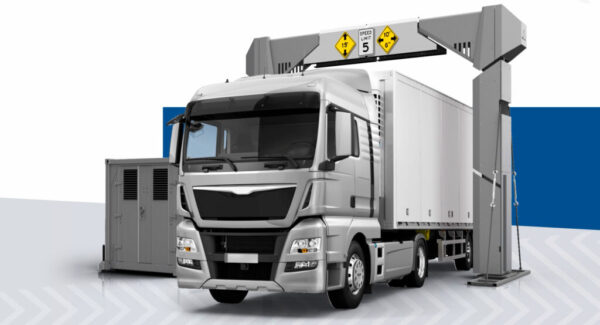
The increasing complexity of global supply chains has brought about significant challenges in ensuring the safety and security of goods transported via trucks. With the rise of criminal activities, smuggling, and terrorism, security operations have had to evolve. One of the most effective technological advancements aiding in this evolution is X-ray technology. By providing a non-intrusive means of inspecting cargo, X-ray technology plays a crucial role in truck security operations, enhancing public safety and streamlining processes.
Understanding X-Ray Technology in Truck Security
X-ray truck technology utilizes electromagnetic radiation to produce images of the contents within an object. In the context of truck security operations, this technology enables security personnel to visualize the internal structure of cargo without physically opening containers or compartments. X-ray scanners can identify different materials based on their density and atomic composition, allowing for the detection of prohibited items such as weapons, drugs, and explosives.
The integration of X-ray technology into truck security operations marks a significant advancement in the field of logistics and transportation. By automating the inspection process, security personnel can focus their efforts on analyzing the results rather than spending time on manual searches. This efficiency not only improves security measures but also reduces delays, ensuring that goods reach their destinations promptly.
Enhancing Detection Capabilities
One of the most significant advantages of X-ray technology is its ability to enhance detection capabilities in truck security operations. Traditional inspection methods, such as manual searches, are often time-consuming and prone to human error. X-ray scanners provide a more reliable means of assessment, allowing for greater accuracy in identifying potential threats.
The technology can differentiate between various materials, making it easier to spot concealed items that might otherwise go unnoticed. Advanced imaging software can highlight suspicious shapes and densities, alerting security personnel to potential dangers. This capability is especially crucial in high-risk areas, where the consequences of undetected threats could be catastrophic.
Streamlining Security Processes
In an age where logistics and transportation demand speed and efficiency, X-ray technology offers a way to streamline security processes. Traditional inspection methods can lead to bottlenecks at checkpoints, causing delays and increasing operational costs. By utilizing X-ray scanners, security operations can significantly reduce the time required for inspections.
When trucks are equipped with X-ray technology, they can undergo real-time scanning as they pass through checkpoints. This not only enhances the flow of traffic but also allows for a more thorough examination of cargo without impeding transit times. The result is a more efficient and effective security protocol that benefits both security personnel and transport operators.
Improving Compliance and Risk Management
Another vital aspect of X-ray technology in truck security operations is its role in improving compliance and risk management. Regulatory bodies have established stringent guidelines to ensure the safety and security of goods in transit. X-ray technology enables security operations to adhere to these regulations more effectively, reducing the risk of non-compliance and associated penalties.
By providing detailed images of cargo contents, X-ray scanners can help identify discrepancies between shipping manifests and the actual contents of trucks. This capability is particularly important for preventing smuggling and trafficking of illegal goods. Enhanced compliance not only protects the public but also fosters a safer environment for businesses engaged in international trade.
Integration with Other Security Measures
While X-ray technology is a powerful tool in truck security operations, it is most effective when integrated with other security measures. For instance, combining X-ray inspections with advanced surveillance systems, biometric access controls, and employee training programs creates a comprehensive security framework. This multi-layered approach mitigates risks and enhances overall safety.
Incorporating X-ray technology into a broader security strategy allows for better data collection and analysis. Security personnel can track trends and patterns over time, enabling them to identify vulnerabilities and adjust protocols accordingly. As threats evolve, so too must the measures in place to combat them, and X-ray technology is an essential component of that adaptability.
Addressing Challenges and Limitations
Despite its numerous benefits, there are challenges and limitations associated with the use of X-ray technology in truck security operations. One significant concern is the potential for privacy issues, particularly when it comes to scanning personal or sensitive cargo. It is crucial for security organizations to establish clear protocols that respect privacy while ensuring safety.
Additionally, the initial investment and maintenance costs for X-ray technology can be significant. Many organizations may hesitate to adopt these systems due to budget constraints. However, the long-term benefits—improved safety, reduced operational delays, and enhanced compliance—often outweigh the upfront costs.
Training personnel to operate and interpret X-ray technology effectively is another critical consideration. Staff must be adequately trained to recognize potential threats and understand the limitations of the technology. Continuous education and training programs can help ensure that personnel remain knowledgeable and capable of maximizing the effectiveness of X-ray inspections.
The Future of Truck Security Operations
As the landscape of transportation and logistics continues to evolve, the role of X-ray technology in truck security operations is likely to expand. Innovations in imaging technology, combined with advancements in artificial intelligence and machine learning, could further enhance the capabilities of X-ray scanners. These improvements may include better detection algorithms, real-time threat analysis, and automated reporting systems, all of which will contribute to heightened public safety.
In conclusion, the implementation of X-ray technology in truck security operations represents a significant step forward in enhancing public safety. By improving detection capabilities, streamlining processes, and integrating with other security measures, X-ray technology plays a vital role in mitigating risks associated with transporting goods. As technology continues to advance, the potential for X-ray systems to enhance security operations further will only increase, paving the way for a safer and more efficient transportation network.